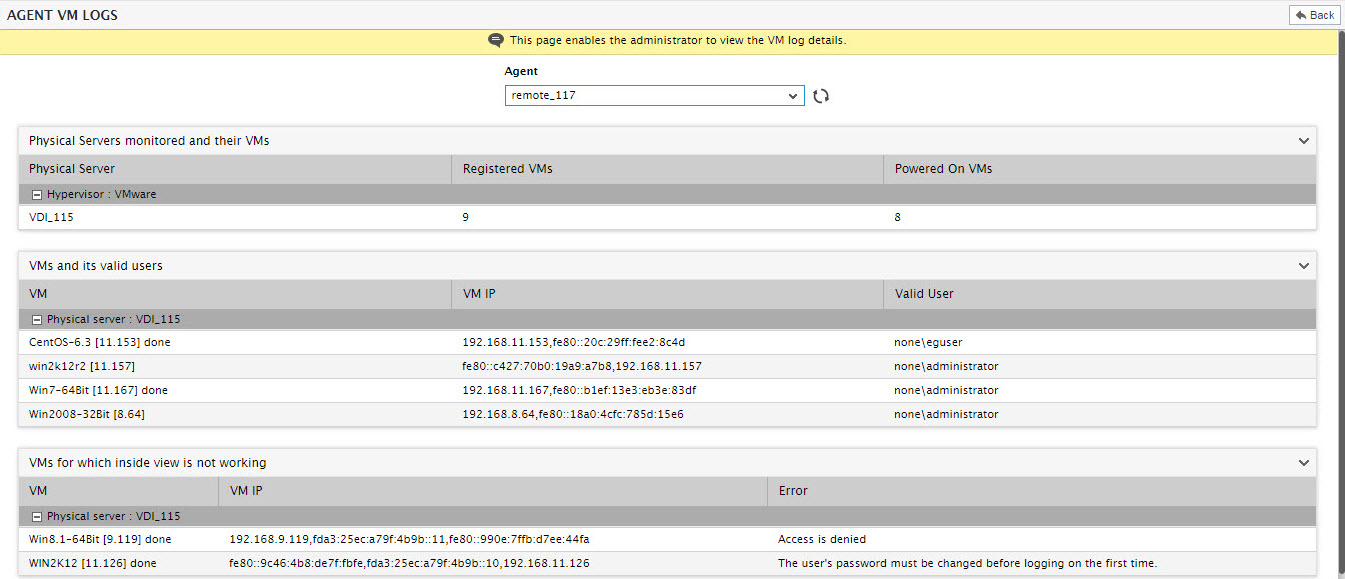Viewing VM Statistics
eG remote agents that perform 'In-N-Out' monitoring of hypervisors (such as VMware vSphere/ESX servers, Citrix XenServers, etc.) and the VMs configured on them capture critical VM-related statistics and errors that occur when monitoring the VMs to a file named eg_vm.ini; this file is automatically created on the agent host. When troubleshooting the failure of the remote agent to obtain the 'inside view' of VMs, this file serves as the primary source of problem information to the administrator, as it provides effective pointers to the root-cause of such failures. Typically, administrators have to physically login to the agent host to view the contents of the eg_vm.ini file. Where multiple hypervisors are being monitored - each with a dedicated remote agent - administrators will have to access the eg_vm.ini file of each agent to initiate investigations. To save administrators the time and trouble involved in this exercise, the eG administrative console now embeds a comprehensive interface, which provides a hypervisor-independent view of the following:
- The physical servers managed by a chosen remote agent;
- The details of VMs running on each physical server;
- The powered-on state of every VM;
- Whether the 'inside view' tests failed on any VM, and if so, the reason for the same
In other words, the dedicated interface allows administrators a sneak peek at the contents of the eg_vm.ini file for a chosen remote agent.
To access this interface, do the following:
- Select the Remote Agents menu option from the Agents tile.
- Click the VM Statistics button in the remote agent configuration page.
- When Figure 1 appears, select a remote agent from the Agent list.
-
Upon selecting a remote agent, the contents of the eg_vm.ini file associated with that agent will then be displayed as depicted by Figure 1 below.

- The Physical Servers monitored and their VMs section of Figure 1 reveals which hypervisors are being monitored by the chosen remote agent. For each hypervisor, this section additionally reports the number of VMs that are currently registered with that hypervisor and the number of VMs that are currently powered on. From this section, administrators can quickly infer how many VMs on which hypervisor are powered-off currently.
- Next, the VMs and its valid users section of Figure 1, provides a hypervisor-wise break-up of VMs. In addition, the section also reveals the IP address of every VM and the valid user to that VM. This information will be useful when configuring the eG agent to collect the “inside view” of VMs.
- Finally, Figure 1 includes a VMs for which inside view is not working section. This section lists the VMs from which the eG agent was unable to obtain inside view metrics and the reason for the same. This will greatly help administrators troubleshoot the failure of the eG agent to collect inside view metrics.
- At any point in time, you can click on the Refresh button next to the Agent list to refresh this page and ensure that the details displayed therein are up-to-date.
